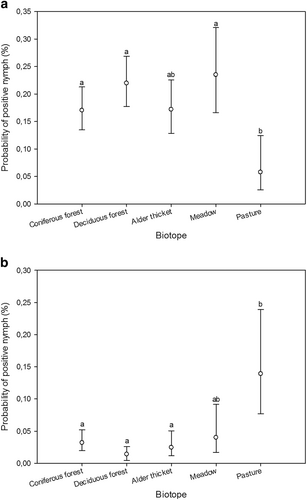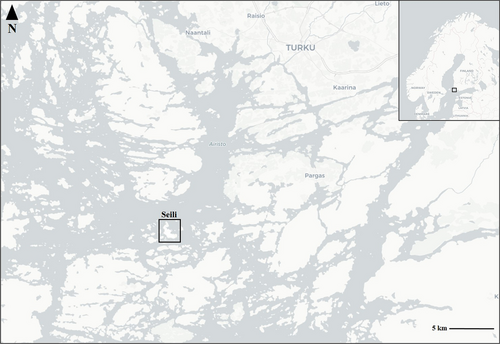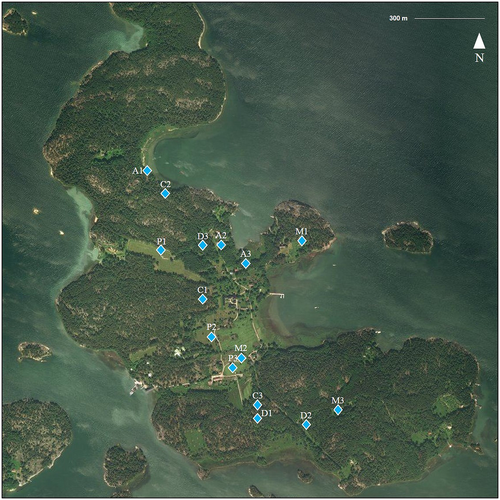Figures & data
Annual prevalence of tick-borne pathogens in nymph and adult Ixodes ricinus from Seili Island
Annual minimum infection rates (MIR) for tick-borne pathogens detected in I. ricinus larvae from Seili Island
Co-infections and associated prevalence detected in individual I. ricinus nymphs and adults from Seili Island
Fig. 1 Estimated probabilities (with 95% confidence limits) of nymph samples being positive for B. burgdorferi s.l. (a) and A. phagocytophilum (b) across biotopes, as predicted by the GLMM. Different biotope classes were assigned matching letters when no statistically significant differences between them could be identified (p > 0.05; multiple pairwise comparisons adjusted by Tukey test). Mismatching letters denote statistically significant differences between biotope classes with different letters (p < 0.05)

Fig. 2 Estimated probabilities (with 95% confidence limits) of nymph samples being positive for B. burgdorferi s.l. (a, c), A. phagocytophilum (b), Rickettsia (d), and Ca. N. mikurensis (e) within biotopes (across transects), as predicted by the GLMM. Different transects were assigned matching letters when no statistically significant differences between them could be identified (p > 0.05; multiple pairwise comparisons adjusted by Tukey test). Mismatching letters denote statistically significant differences between transects with different letters (p < 0.05). C1-3, transects in coniferous forest; D1-3, transects in deciduous forest



